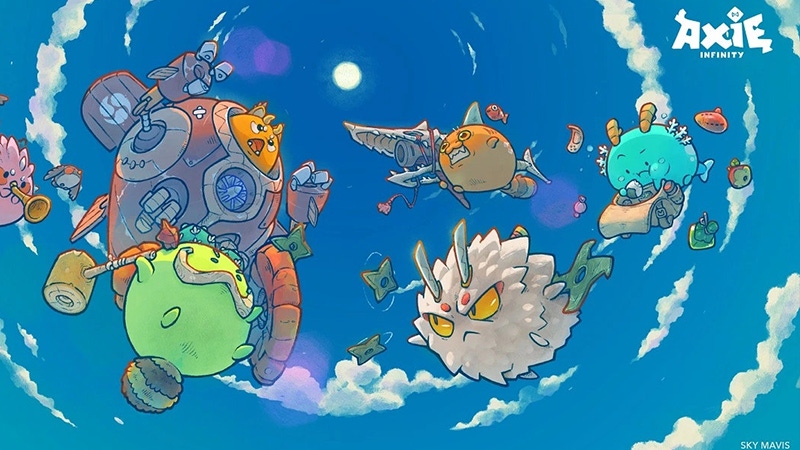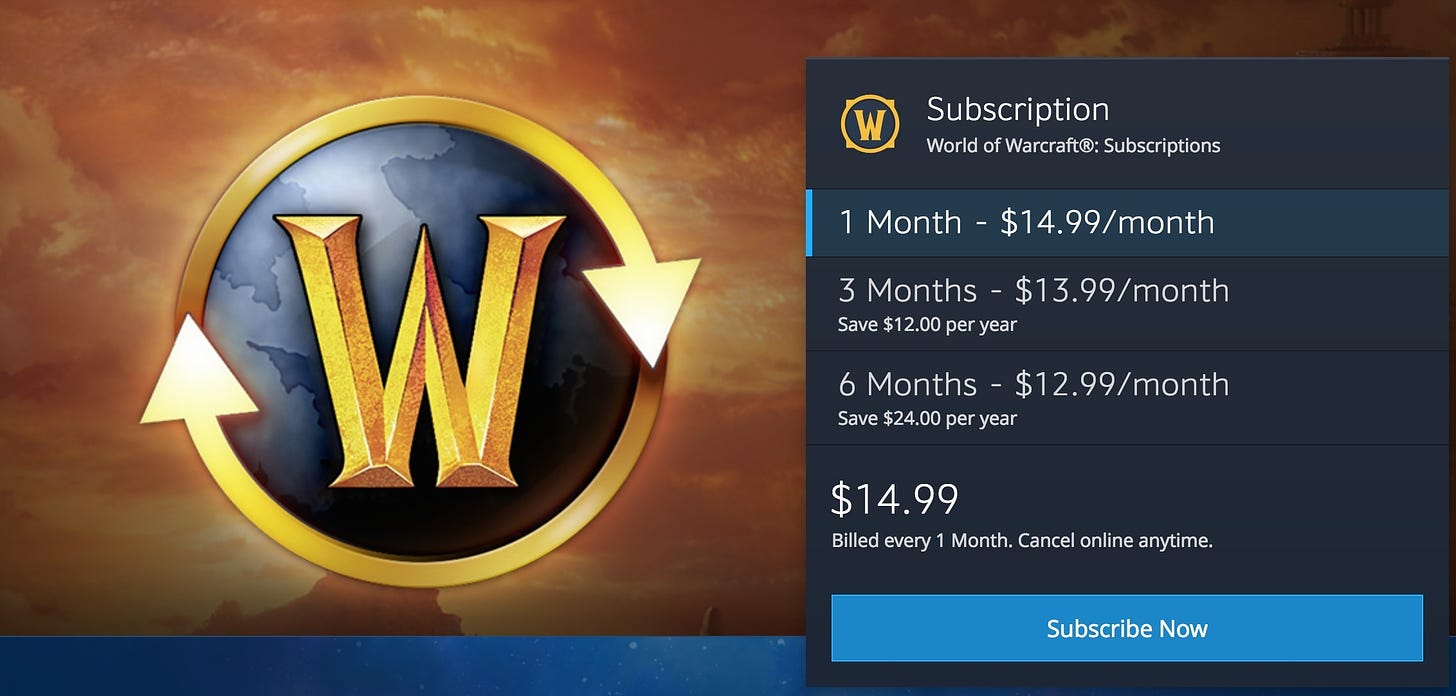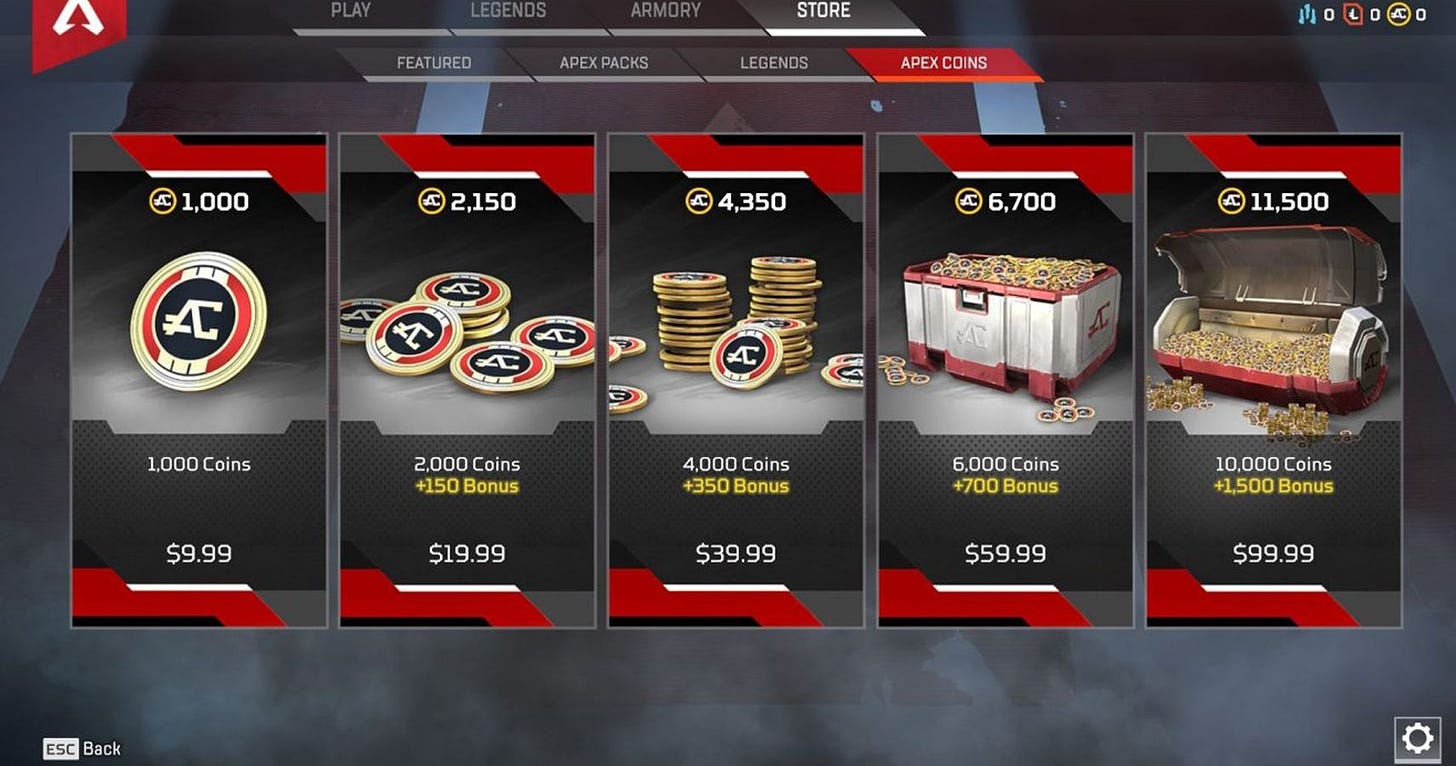
Featured Blog | This community-written post highlights the best of what the game industry has to offer. Read more like it on the Game Developer Blogs or learn how to Submit Your Own Blog Post
Game monetization, the promise of play-and-earn, and harmonizing incentives
Play-and-earn is a promising new monetization model that can harmonize the incentives between developers, players and investors. Let's establish a framework for understanding that type of monetization. This is the first in a series.

What if I told you there was a model that could potentially fund games -- both initial funding, and their continued development? I'm here to share an exciting new challenge for game developers: building play-to-earn / play-and-earn games.
Axie Infinity has been making headlines in the news cycle for a variety of reasons: its token’s price action, how it 'creates work' for people globally and its incredible profit surge, surpassing revenue from both Ethereum and Bitcoin combined. (84.9 million USD in funds for its treasury!)
I’d like to zoom out from the news cycle and write something a little more lasting: a survey of how games have monetized hitherto, how play to earn acts as a new model for monetization, and how this form of monetization can change the relationship between devs and players.
I’ll bring in examples from various video game economies along the way.
First, let's establish a framework for understanding video-game monetization, discussing free-to-play, premium games, in-app purchases, DLCs, and play-to-earn.
Towards the end, I’ll write about how play and earn can lead to incentive alignment between developer and player.
Games as Products
Games are products that require money to keep them going — server costs, the cost of hiring engineers and developers to build them, etc. To support a game (particularly an online one) into perpetuity is expensive, even (and especially!) ones with 200 million user accounts at their peak. (See Club Penguin.)
Fig 1: Club Penguin, an MMO that monetized using paid memberships. It was acquired for 350 million USD++ by Disney and yet shut down in 2017.
Keeping a (Game’s) Engine Running
Game developers have a choice of how to monetize and fund their games. They must find ways to (1) fund initial development, (2) make revenue from the game that outstrips expenses.
So they monetize.
My claim is that the mode of monetization in video games can drastically affect the end-user experience of the video game, and I’ll break down the different incentives that developers will encounter based on the choices they make re: monetization.
There are free-to-play games (F2P), and there are premium (P2P, or pay-to-play) games. We define free-to-play as ‘free-to-start’, providing some level of gameplay without requiring any cash investment from the player. In contrast, a P2P game requires you to invest up-front in order to meaningfully engage in the game. The line between F2P and P2P has blurred in recent years, but this distinction is clear enough for our purposes.
Free to Play
Free-to-play means: no up-front cash investment is required for you to begin playing the game.
Onboarding might involve registration of an account, downloading an app onto your phone, or even simply visiting a website with a catalog of games (itch.io, for example).
Free-to-Play games monetize in a variety of ways — sponsorships, advertisements, and most notoriously, in-app purchases which can be either cosmetic or have an effect on gameplay.

Fig 2: It’s raining! Now you can view an advertisement to extend your boost.
Challenges: advertisements can break the flow and frustrate users. Rewarded ads do a better at resolving this dissonance, but still take away from play-time. Cosmetic items don’t sell nearly enough in most games to fund the development of the game, and every gamer is familiar with this phrase: pay-to-win.
Premium Games
Premium games are games that you pay upfront for.
When you want to play these games, you might go to GameStop to buy The Witcher 3 for 18.99, or you might buy Minecraft from the Microsoft store for 19.99, or download Stardew Valley on your iPhone for 7.99 USD.

Fig 2: Familiar with this screen?
You could also buy, and then pay a subscription to continue playing in the game, like World of Warcraft. Yes, the game that has had more than 9 billion USD of revenue as of 2017. You’ll see more WoW in other articles, too!

Fig 3: Your subscription has expired. Renew?
The Challenge of Monetization
Both F2P and Premium games can have multiple monetization features: a free-to-play game can be free-to-start while allowing membership subscription (Runescape) or be free-to-play while allowing a one-time membership purchase for more content (BattleOn). A F2P game can show you advertisements (any hypercasual game on your phone) and allow you to buy cosmetics (DotA 2, League of Legends).
In-App Purchases
Microtransactions. So many forms.
Denial of access to game - You’ll be in the game, and you receive a popup saying ‘oh, too bad you ran out of energy. Want to give us $1.99 to keep playing?’
Cosmetic - Here’s some items that make you look cooler than other people. And you basically have to pay to get them.
Powerups - Here’s some items that make you stronger than other people, faster.
It goes on, and on.
I do believe if we zoom out from this frame of “how can we make the most money from the player”, we’ll be able to discover new modes of monetization that (1) grow game communities and (2) derisk the game development process. I believe relying solely on monetization via IAP / microtransactions is a local maxima which erodes trust of players over time.
Even cosmetics aren’t immune from the animosity towards microtransactions. NPR wrote this piece back in March, with a great insight:
Microtransactions aren't just about the cosmetic upgrades; often, they're important to the actual gameplay. Dr. Ellen Evers, a marketing professor at the University of California, Berkeley who researches microtransactions, says that can take away a video game's magic.
…
“The implicit assumption is that by playing the game and building up your character, you're supposed to get better," says Evers. "Microtransactions basically make the game easier. They violate those rules and norms that are part of the game."
The magic circle of the game is violated when you press too heavily upon that assumption, which can disengage players. Microtransactions aren’t terrible, but game developers have to be very careful about using them.


Combating Dissonance
With these existing models, developers have to walk a tenuous line. Why?
As they develop the game, any feature has to serve bottom-line revenue somehow. That’s just how the economics of game development work right now. Let’s raise LTV, reduce CAC. Find ways to cash in on our time, and resources spent developing the game. It can seem like fun and sustainability move in two opposing directions.
Monetization often becomes something that a player dreads (advertisements), or merely tolerates (ok, I can play Clash Royale, and come up against difficult enemies once in a while. But as long as I get to play).
In the same way, when players play the game, they can feel like it draws away from their financial goals. (The closest we can get to integration and alignment is: “I play to destress from my job and work.”)
But moving past that is going to allow for a re-valuation of values: it is an opportunity for designers to pave the way for game economies that allow skilled users to engage in high leverage work, and regular users to enjoy the game, with the accrual of value as a by-product. Work that can fund “nappies and milk for their babies, to shoes and shirts to wear to job interviews.”
Play to Earn / Play and Earn games can help resolve that dissonance and tension. Building Play to Earn experiences means giving people 'work in the metaverse', and so playing can become more of an investment and less of an expense. Cool, huh?
On Gold Making, and Leveraged Work
In World of Warcraft, there are many ways a player can make gold. In fact, there are entire websites dedicated to how you can make more gold! Killing monsters one by one is one of the slowest ways to do it.
Let’s talk about some ways people make gold in World of Warcraft.
Farming specific items (Bind on Equip Items or Pets that sell well)
AoE mob farming (killing groups of monsters at once)
Mastering the Auction House (buying and selling items to other players, engaging in commerce)
Selling runs (pay me 50k gold and I’ll bring you in a group to kill this boss for you)
My favorite was the last one. I have fond memories of Wrath of the Lich King, where I would run 25-man raids of skilled players I met on my server (Dath’Remar, Alliance). Towards the end of the expansion, we were near-fully geared, and had multiple alternate accounts (alts) to raid with. So we ran GDKP runs.
We’d take 15 geared players, and 10 undergeared ones. Undergeared players would have to commit say, 20,000 gold each. Whenever equipment dropped from a boss, we’d auction off each item for gold, which is added to the pot. At the end of the raid, the entire pot would be distributed amongst all players.
Self-organizing and networks of legitimacy worked in games like World of Warcraft, so I believe they can work in the metaverse too. In fact, it might work even better: one could write a smart contract that automates such a process, so you wouldn’t even have to trust a raid leader to distribute that gold.
And then you can multithread this process, as Matthew does in For the Win, with eight simultaneous games of Svartalfaheim Warriors (the fictional MMO).
If anything, it’ll teach a whole generation of people how to write bots to play those games, and that might not be too terrible of an outcome too :)
Play to Earn
Play to Earn games have complex digital economies, just like World of Warcraft. There are many different ways to make and spend in-game currency. Players work to earn “incredible loot”, and develop value. The question is: can that value pay their bills?
In a future article, we can dive deeper into the Axie Infinity phenomenon and how their virtual economy works to provide a compelling play-to-earn experience.
But I believe you can get a good understanding of the potential impact of developing more play-to-earn experiences from watching this 18 minute documentary.
Some salient quotes:
“At first, it looks easy because there’s a cute Axie… but when you’re in the game it’s like playing chess. It’s strategic.”
“(Playing Axie Infinity) is his hobby. Even when he loses, he would still play even without getting anything.” - Lola Vergie, 65, speaking about her partner, Lolo Silverio, 75
“(The pandemic) destroyed a lot of physical jobs, and in many cases, permanently… we’re dealing with a fundamental change in the nature of work.” - Gabby Dizon, Co-founder, Yield Guild Games (YGG)
Yield Guild Games raised 12.5 million USD in a public token sale.
“(With Play to Earn), people get an opportunity to play, which is what they like to do, and they have the opportunity to make money from spending their skill and time in games to make a living.” - Anil Lulla, Chief Operating Officer at Delphi Digital, a New York based blockchain consulting firm
“Crypto based games are community owned. Everybody in the community gets to share in the revenues and the upsides which means that participants, people who play, get a chance to play to earn.” - Mark Cuban

Building a game with Play to Earn in mind means bringing in the larger community and allowing them to benefit from the game’s growth. It is incentive alignment.
Developers have to lower the walled garden around digital assets in these game economies. They have to acknowledge grey markets and make them transparent.
Then, they can say, hey, we’d like a cut of those transactions too — for facilitating transactions. It’s a chance to acknowledge the dissonance that players feel when playing games, and tackle it by making it a part of the game.
When developers design games that are ‘play-to-earn’ first, it feels less like a zero-sum game between developers and players. You won’t be grafting on play-to-earn mechanics, you’ll be working together with players to create new value.
Play and Earn
I’ll also take the chance here to discuss Play to Earn vs Play and Earn.
Play to Earn suggests that one plays in order to earn, which can feel dystopian; it reminds one of click farms or gold farmers.
Play and Earn suggests the collaboration of play and earning. They are two equal actions. Playing a game for enjoyment, and earning money as well, just by the value you create while playing.
I first picked up on the term “play and earn” from Guild of Guardians, which is a mobile blockchain RPG published by Immutable. They plan to launch in 2022 or 2023.
The challenge of game designers in a play-to-earn, or play-and-earn game is to help shape the player’s perception of the game’s utility to them. Designers charting in this new space must be able to articulate the value a game provides beyond entertainment, not through words, but game mechanics and economy design.
Play and earn can become a challenge in itself, techne to be fashioned. Allowing players to monetize their value can add another dimension and layer to the game, and a degree of motivation.
To become really, really good at something is to be engaging in a continual process of overcoming.
Now, I’m not claiming that Play to Earn (P2E), or Play and Earn (P&E), are going to replace monetization via microtransactions, or other forms of monetization. However, I will claim that the incentive, and even the obligation, to engage in these patterns will be diminished for such video games, because there exists new ways to create values for both the players and us devs. We can keep making decisions that make the game more fun.
There are more options!
There now exist ways that can easily allow players and invested community members to benefit from the value they create by playing the game — ways that are non-zero sum.
That’s an exciting start.
This article was published originally at Metaversus, Level 2. The series currently goes up to Level 5, which discusses Play-and-Earn.
Read more about:
Featured BlogsAbout the Author(s)
You May Also Like








.jpeg?width=700&auto=webp&quality=80&disable=upscale)








